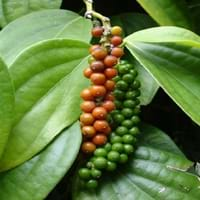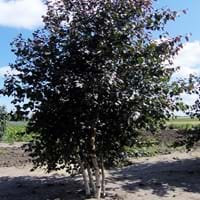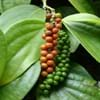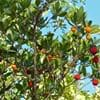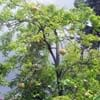Life Span
Perennial
Biennial
Type
Broadleaf Evergreen, Vines
Tree
Origin
India, Indonesia, Southeast Asia, Southern Asia
Hybrid origin
Types
Red pepper, Orange pepper
Chinese red birch, Betula fruticosa, Betula ermanii
Habitat
Moist Soils, orchards, Temperate Regions
Rocky areas, Sandy areas, Well Drained, Wet forest, Wet ground, Wet lands
USDA Hardiness Zone
8-15
4-7
Sunset Zone
H1, H2, 8, 9, 14, 15, 16, 17, 18, 19, 20, 21, 22, 23, 24
A2, A3, 1a, 1b, 2a, 2b, 3a, 3b, 4, 5, 6, 7, 14, 15, 16
Habit
Clump-Forming
Pyramidal
Minimum Width
Not Available
Flower Color
Lemon yellow
Yellow, Tan
Flower Color Modifier
Bicolor
Bicolor
Fruit Color
Red, Green, Light Green
Bronze, Sandy Brown
Leaf Color in Spring
Light Green, Dark Green
Not Available
Leaf Color in Summer
Light Green
Not Available
Leaf Color in Fall
Light Green, Dark Green
Yellow, Red, Orange
Leaf Color in Winter
Light Green, Dark Green
Not Available
Leaf Shape
Circular cordate
Heart-shaped
Plant Season
Spring, Summer, Fall, Winter
Spring, Summer, Fall, Winter
Sunlight
Full Sun, Partial Sun, Partial shade
Full Sun, Partial Sun
Type of Soil
Loam, Sand
Loam
The pH of Soil
Acidic, Neutral, Alkaline
Acidic, Neutral
Soil Drainage
Average
Average
Bloom Time
Not Available
Early Spring
Tolerances
Drought
Not Available
Where to Plant?
Container, Ground
Ground
How to Plant?
Seedlings, Stem Planting, Vegetative Reproduction
Seedlings, Stem Planting
Plant Maintenance
Medium
Medium
Watering Requirements
Do Not over Water, Sprinkle water over foliage, Water every two or three days during warmer months
Average Water Needs, Medium
In Summer
Lots of watering
Lots of watering
In Spring
Moderate
Moderate
In Winter
Average Water
Average Water
Soil pH
Acidic, Neutral, Alkaline
Acidic, Neutral
Soil Type
Loam, Sand
Loam
Soil Drainage Capacity
Average
Average
Sun Exposure
Full Sun, Partial Sun, Partial shade
Full Sun, Partial Sun
Pruning
A hard prune may be necessary if the plant becomes woody, Remove dead branches, Trim each shoot back to the first set of leaves
Prune in early spring, Prune in late winter, Remove damaged leaves, Remove dead branches, Remove dead leaves, Remove dead or diseased plant parts, Remove short branches
Fertilizers
10-10-10 diluted liquid fertilizer, All-Purpose Liquid Fertilizer, Do not let fertilizers touch the leaves
All-Purpose Liquid Fertilizer, Fertilize in early spring, Fertilize in late fall, Nitrogen
Pests and Diseases
Aphids, Beetles, Root rot, Rust, Scab
Red blotch
Plant Tolerance
Heat Tolerance, Humidity, Salt and Soil Compaction
Not Available
Flowers
Not Available
Insignificant
Flower Petal Number
Single
Not Available
Foliage Texture
Medium
Medium
Foliage Sheen
Matte
Glossy
Attracts
Aphids, Leafminer, Snails, Squirrels
Ants, Birds, Insects
Allergy
Oral Allergy
Itchiness, Pollen, Sore Throat
Aesthetic Uses
Beautification, Cottage Garden, Decorating walls
Not Used For Aesthetic Purpose
Beauty Benefits
Acne, Blackheads
Good for skin, Not Available, Skin Problems
Environmental Uses
Fixes Nitrogen, Insect Repellent
Air purification, Shadow Tree
Medicinal Uses
Acid Reflux, Dysentry, Healthy teeth, Inflammation, Oral health
anti-inflammatory, Arthritis, Bone strength, Dermatitis, Eczema, Eliminate toxins, Heart problems, High cholestrol, Immunity, Kidney problems
Part of Plant Used
Dried seeds
Whole plant
Other Uses
Culinary use, Oil is used for aromatherapy, Used in herbal medicines
Used in paper industry
Used As Indoor Plant
Yes
No
Used As Outdoor Plant
Yes
Yes
Garden Design
Container, Feature Plant, Hedges, Screening / Wind Break, Tropical
Feature Plant, Mixed Border, Shade Trees
Botanical Name
Piper nigrum
BETULA 'Crimson Frost'
Common Name
Peppercorn, Piper, Black pepper
Birch, Crimson Frost Birch
In Hindi
काली मिर्च
भोज पत्र
In French
Piper nigrum
Arbre de bouleau
In Spanish
Poivrier noir
Abedul
In Greek
μαύρο πιπέρι
Birch Tree
In Portuguese
Pimenta-preta
bétula
In Polish
Pieprz czarny
Brzoza
In Latin
nigrum piperis
Caerulus
Phylum
Magnoliophyta
Magnoliophyta
Class
Magnoliopsida
Magnoliopsida
Family
Piperaceae
Betulaceae
Clade
Angiosperms, Monocots
Angiosperms, Eudicots, Rosids
Tribe
Not Available
Not Available
Subfamily
Not Available
Carpinaceae
Number of Species
Not Available
Season and Care of Black pepper and Birch
Season and care of Black pepper and Birch is important to know. While considering everything about Black pepper and Birch Care, growing season is an essential factor. Black pepper season is Spring, Summer, Fall and Winter and Birch season is Spring, Summer, Fall and Winter. The type of soil for Black pepper is Loam, Sand and for Birch is Loam while the PH of soil for Black pepper is Acidic, Neutral, Alkaline and for Birch is Acidic, Neutral.
Black pepper and Birch Physical Information
Black pepper and Birch physical information is very important for comparison. Black pepper height is 180.00 cm and width Not Available whereas Birch height is 1,219.20 cm and width 762.00 cm. The color specification of Black pepper and Birch are as follows:
Black pepper flower color: Lemon yellow
Black pepper leaf color: Light Green and Dark Green
Birch flower color: Yellow and Tan
- Birch leaf color: Not Available
Care of Black pepper and Birch
Care of Black pepper and Birch include pruning, fertilizers, watering etc. Black pepper pruning is done A hard prune may be necessary if the plant becomes woody, Remove dead branches and Trim each shoot back to the first set of leaves and Birch pruning is done Prune in early spring, Prune in late winter, Remove damaged leaves, Remove dead branches, Remove dead leaves, Remove dead or diseased plant parts and Remove short branches. In summer Black pepper needs Lots of watering and in winter, it needs Average Water. Whereas, in summer Birch needs Lots of watering and in winter, it needs Average Water.
